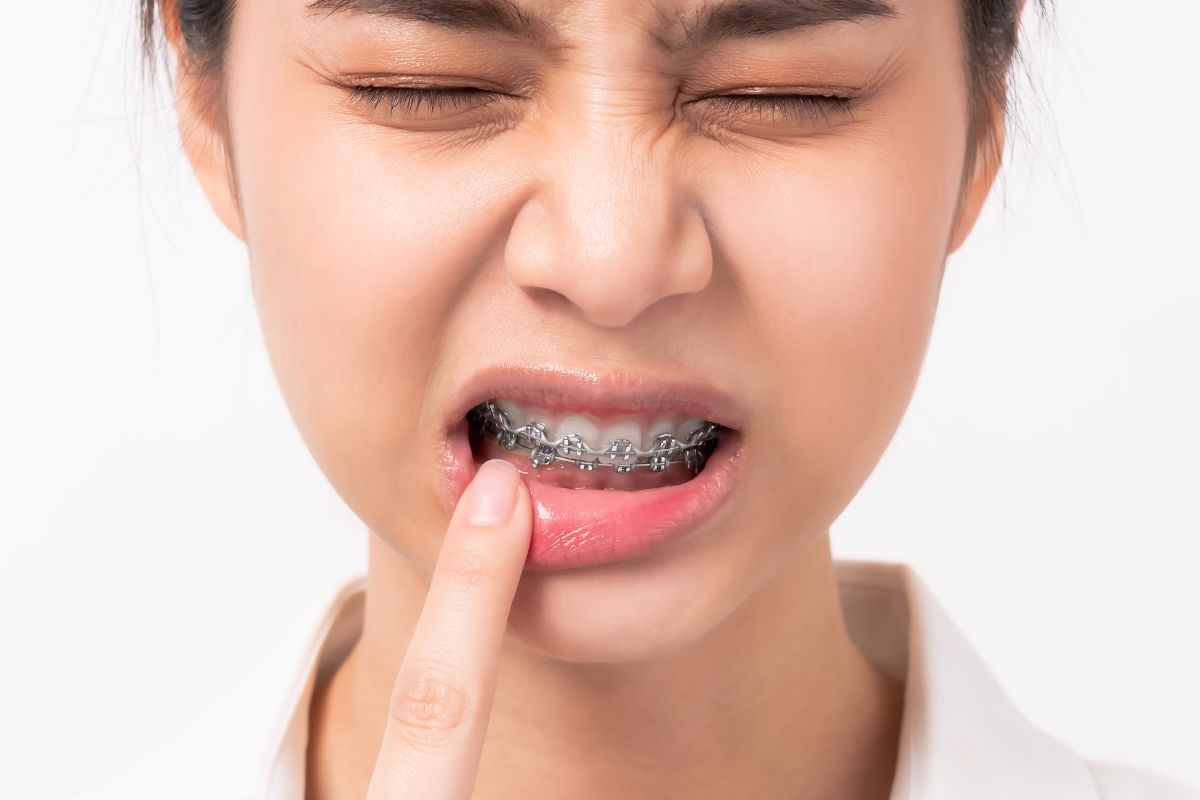You’ve got an overbite.
It’s not the end of the world—it just means your top teeth stick out a bit more than they should.
But it can affect your smile, bite, and even cause jaw issues if it goes untreated.
That’s where your orthodontist steps in. Braces, aligners, or even jaw correction tools—whatever it takes to get things aligned properly.
Let’s break down how braces fix it, no fluff, no guesswork.
How Do Orthodontists Fix Overbite?
Orthodontists fix overbites using braces, clear aligners, rubber bands, or jaw surgery—based on how severe the case is and the patient’s age.
Key Takeaways
- Overbite means your top teeth stick out too far over the bottom.
- Braces, aligners, elastics, or surgery can fix it.
- Early orthodontic treatment (age 7–12) works fastest.
- Retainers lock in results once it’s corrected.
What Is an Overbite?

A severe overbite is when your top front teeth sit too far in front of your bottom teeth. A small gap is normal, but a deep overbite can throw things off.
There are two main types: dental overbite, caused by tooth position, and skeletal overbite, caused by jaw structure.
It can come from genetics, thumb sucking as a kid, or even long-term pacifier use. Whatever the cause, it’s common—and totally fixable.
If left untreated, it can lead to uneven wear, jaw pain, and even trouble chewing. That’s why orthodontists assess your full bite, not just your smile.
Why Fixing an Overbite Matters
Fixing an overbite isn’t just about getting a cleaner selfie—though that’s a bonus. If your teeth don’t line up right, they wear down faster and chewing becomes frustrating.
It can also stress your jaw, causing pain, tightness, or those weird clicks when you eat. Over time, it affects your bite, your comfort, and your confidence.
Getting it fixed early helps prevent long-term damage and costly treatments. It’s more than cosmetic—it’s a smart move.
Common Methods Orthodontists Use to Fix Overbite
Alright, here’s how orthodontists actually fix overbites—no hype, just facts.
Braces
Braces use steady pressure to move your teeth and jaw into alignment.
They’re often used when an overbite affects your whole bite. Most cases take 18–24 months, but timing depends on severity.
Clear Aligners
Think Invisalign. These clear trays gradually shift your teeth without wires.
They’re ideal for mild to moderate dental overbites but may not work as well for more complex, jaw-related cases. You’ve got to wear them 20–22 hours a day.
Rubber Bands and Bite Tools
Elastics help guide jaw movement by creating controlled pressure.
In some cases, tools like Forsus springs or Herbst appliances are used to reposition the jaw while you go about your day.
Jaw Surgery (for the big fixes)
Surgery is rare and usually reserved for adults with severe skeletal overbites.
It’s called orthognathic surgery and involves moving the jaw into better alignment, often paired with braces before and after.
Bottom line? There’s no one-size-fits-all. Your orthodontist evaluates your bite, jaw growth, and age to choose the best option—braces, trays, tools, or surgery.
Best Age to Fix an Overbite
The sweet spot? Ages 7 to 12. Your jaw’s still developing, so guiding growth is easier.
Missed the early train? No problem. Adult treatment still works—it may just take a bit longer.
Fixing things early helps avoid bigger issues later. The longer you wait, the tougher it can be to treat.
What to Expect During Overbite Treatment

Don’t expect instant results—it’s a gradual process.
The first few weeks might bring soreness. That’s your mouth adjusting to the pressure.
You’ll have check-ins every few weeks for tweaks—adjusting wires, handing off new trays, or adding elastics.
As treatment progresses, your bite shifts. The last step? A retainer to lock in that new alignment.
Maintaining Results After Overbite Correction
Retainers are your ride-or-die
Once the braces come off, your retainer keeps your teeth from shifting back. Wear it exactly how your ortho says.
Stay in the loop with your ortho
Keep going to follow-up appointments. If something feels off, don’t wait—get it checked. Protect the fix Skip nail-biting and chewing ice. Little habits can mess with all that progress.
Frequently Asked Questions
1. Do braces always fix an overbite?
Most of the time, yes. Braces are the go-to solution. Severe cases may need extra tools or surgery.
2. Can clear aligners fix an overbite?
Yes, if it’s a mild or moderate one. Stick to the schedule and show up for your check-ins.
3. How long does overbite treatment take?
Typically 1 to 2 years, depending on the case and how closely you follow the plan.
4. Is fixing an overbite just about looks?
Nope. It helps prevent jaw pain, chewing issues, and long-term damage.
Conclusion
Overbites are common—and fixable.
Whether it’s braces, aligners, or jaw tools, your orthodontist has the plan. Start early if you can, but adult treatment still gets the job done.
%202.svg)



